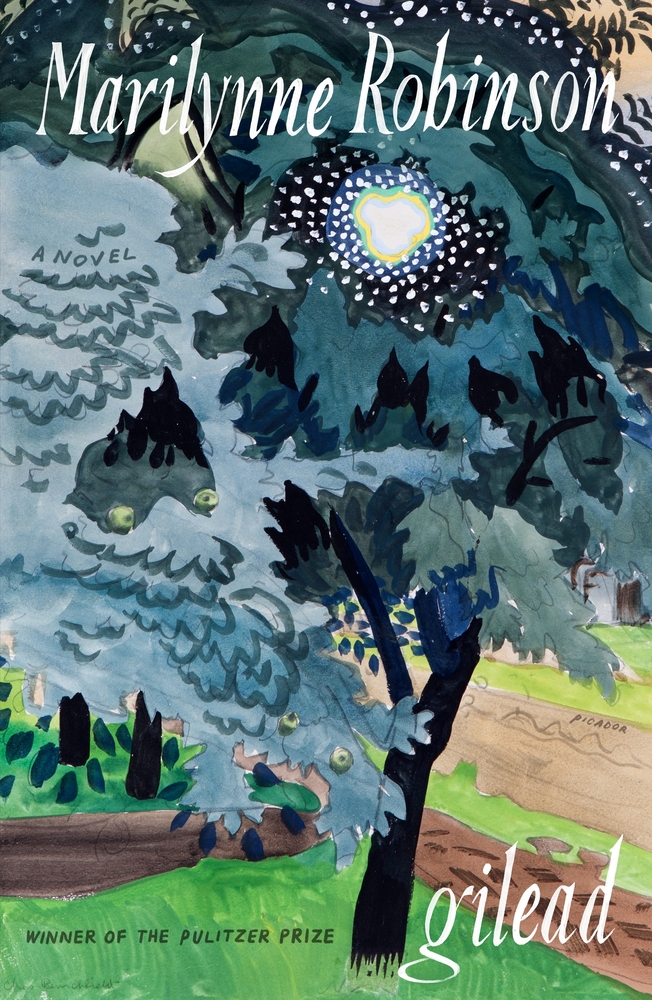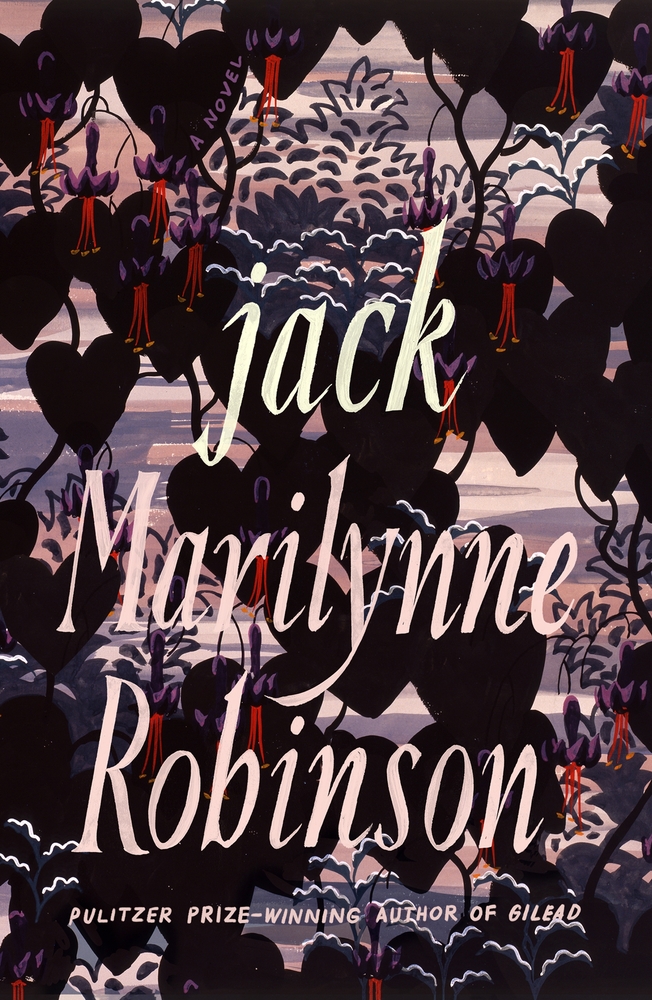Black Mountain, NC. The ending lines of Gilead reflect Reverend Ames’s whole project: a dying letter to his young son where he is much preoccupied about his godson, Jack Boughton. After referencing Augustine on how God loves each of us as His only child, he writes, “Theologians talk about a prevenient grace that precedes grace itself and allows us to accept it. I think there must also be a prevenient courage that allows us to be brave—that is, to acknowledge that there is more beauty than our eyes can bear, that precious things have been put into our hands and to do nothing to honor them is to do great harm. And therefore, this courage allows us, as the old men said, to make ourselves useful. It allows us to be generous, which is another way of saying exactly the same thing” (246). To be useful and generous, to give honor, to recognize grace. And his last words written to his young son, and subsequently to us, are as follows: “I’ll pray that you grow up a brave man in a brave country. I will pray you find a way to be useful. I’ll pray, then I’ll sleep” (247). Beauty in existence. The courage to see. The ability to be generous. Ames ends in prayer with these words, and as prayer, presupposing the work of God.[1] As he goes to sleep, he trusts God to be working in the grace of sacred reality.
In many ways, Gilead follows in the mold of Confessions by St. Augustine. Though Augustine did not write as a dying man, both are extended prayer and meditation upon their lives to another.[2] Augustine’s Confessions is written as a prayer to God, and Ames comments, “For me, writing has always felt like prayer, even when I wasn’t writing prayers, as I was often enough” (19). There are two other central commonalities between Ames and Augustine: their conviction that existence is a sacred thing and their sacramental vision of the world. It’s not just that creation shines and existence is beautiful; the vision to see the sacramental reality flows from and through the sacraments. It’s only in seeing the essential sacraments that God can be seen in the rest of the world. God sanctifies the world through material things, yes, but it is through the material that is bread and water primarily.
Sacred Reality: Evil as Non-Being
Augustine was one of the earliest theologians to develop an understanding of evil. In essence, how could evil come to be in a world that a good God created? Most succinctly, he writes, “What is called evil in the universe is but the absence of good.” But this doctrine for Augustine extends far beyond the creational narrative. If evil is the absence of the good, then the worst thing is to no exist at all: non-being. In Enchridon, he writes, “ “All of nature, therefore, is good, since the Creator of all nature is supremely good… But even if the corruption is not arrested, it still does not cease having some good of which it cannot be further deprived. If, however, the corruption comes to be total and entire, there is no good left either, because it is no longer an entity at all… Yet only the foolish and unknowing can deny that it is still good even when corrupted.”[3] For Augustine, pure evil is non-being. Any form of existence, however corrupt and whatever poor fruit is born, still lingers with the good. So long as there is life, it is endowed as a blessed reality.
For most every thing that Robinson writes, the sacredness of being alive is a central concern. Infused in her writing are these Augustinian sentiments that to exist is to share in holiness. Robinson through Reverend Ames writes, “Existence is the essential thing and the holy thing” (189). The fact that things exist at all is sacred. The fact that he’s still in existence writing to his son is something that reframes his reality as a holy thing. When he looks at the world with his impending death, he sees anew. At one point in the novel, he looks out and describes the miracle that is his son. He then lists his unique characteristics but concludes, “All that is fine, but it’s your existence I love you for, mainly. Existence seems to me now the most remarkable thing that could ever be imagined” (53). In another place, “You see how it is godlike to love the being of someone. Your existence is a delight to us” (136). The aging Reverend is encouraging his son to love things for their intrinsic good of existence rather than the transactional or utilitarian good that it could serve. It’s the way he loves his son, and by implication, the way Ames encourages him to love all things. Existence presupposes some degree of goodness.
This idea of sacred reality is the way he frames his own life: “I have been thinking about existence lately. In fact I have been so full of admiration for existence that I have hardly to enjoy it properly… I feel sometimes as if I were a child who opens its eyes on the world once and sees amazing things it will never know any names for and then has to close its eyes again. I know this is all mere apparition compared to what awaits us, but it only lovelier for that. There is a human beauty in it” (57). As he surveys the landscape of the world, he compares it to the blink of an eye—but he has appreciation for the glance he gets. It’s better to exist at all than to never exist. There’s goodness and beauty here in the world even if it is but a mere human beauty. For Ames, it’s better to experience these shadows then nothing at all. “It does not cease having some good” in the words of Augustine.
Sacramental Reality
One of the central critiques of Robinson’s is that her portrayal of this sacred reality sounds more Romantic than Christian—that she sees too much of the divine in too many places without a due account of pain, hurt, sin, or cost. In short, she sees without the cross. Keith Johnson, the co-editor of a book of recent essays reflecting on Robinson’s writings argues that in Robinson grace becomes nature. This point is picked up in the online pages of Church Life Journal in an essay by Jessica Hooten Wilson. She argues that this feature makes Robinson more Transcendental than Christian. She contrasts this with the more gruesome or cruciform depictions of beauty by authors such as Flannery O’Connor.
Nevertheless, I would argue for the orthodoxy of Robinson’s sacred vision. It’s my contention that the sacraments give Reverend Ames the eyes to see the sacred. Everything is not sacred by itself, but there is goodness in existing things. There is also a rupture, so we need the sacraments and the life-giving, sight-bestowing nature of these realities. The main point of the sacraments are not themselves but what they point beyond and to. It’s not the will that revisions reality; it’s Gods reinvesting the world with his presence to point creation back to him. It’s through the charred biscuit broken in a broken community that leads Ames to see the world as gift. The world is not just various occasions to see God, but the sacraments give us eyes to see God in all things.
There are two paradigmatic events in Gilead that give Ames the courage to see. Both occur in childhood, and they show his early formation in sacramental seeing: one happens when baptizing a cat while playing preacher with fellow children, the other takes place in the ruins of a black church.
Ames refers to Calvin’s Institutes on several occasions, as befits a good Presbyterian minister. He has an affinity for Volume II of the Institutes which includes Calvin’s discussion of the sacraments. Calvin cites Augustine “who teaches that a sacrament is a visible sign of a sacred thing, or a visible form of an invisible grace, but better and more clearly explains the thing itself.”[4] Inherent in this understanding of the sacraments is that the material world communicates God to man. Sacraments teach us about grace through an ordinary or physical object. Michael Himes extrapolates these particular acts to a vision of the Christian life: “The whole Catholic sacramental life is training to beholders. Catholic liturgy is a lifelong pedagogy to bring us to see what is there, to behold what is always present, in the conviction that if we truly see and fully appreciate what is there . . . we will be encountering grace.”[5] For Augustine, there are real moments of grace in the sacraments, and such moments help us see more moments in ordinary things on ordinary days. Or in Augustinian lingo, the particular signs that point to the ultimate thing gives the believer eyes to see that everything is a sign that points to the ultimate thing: namely, grace.[6] Augustine’s sacramental vision imagines a sign-world which Reverend Ames adopts.
Reverend Ames is a see-er. I mean that in both senses of the term: in light of his impending death, he notices details, and through Robinson, he becomes a prophet, one who newly imagines the world, a seer. On the third page, he observes the way people laugh (5). In fact, Reverend Ames adds, the purpose of the religious vocation is that it helps you concentrate (7). He remembers his past, attends to his present, and sees forth to a time yet to come. The question in regards to Robinson’s theology via Reverend Ames is what gives him his sight?
There are two episodes in the beginning half of Gilead that train his eyes.[7] The first features the baptism of a litter of kittens, which is a fitting picture of the outrageousness of grace. Baptizing a cat is a common metaphor for the impossible or inadvisable. Playing the role of pious preacher, Reverend Ames swaddles the kittens in a doll’s dress, moistens their brow in a creek, and repeats the Trinitarian formula. In his recollection of the event, he says, “There is a reality in blessing, which I take baptism to be, primarily. It doesn’t enhance sacredness, but it acknowledges it, and there is power in that” (23). And then he concludes the episode with thoughts from Ludwig Feuerbach:
Ludwig Feuerbach says a wonderful thing about baptism. I have it marked. He says, “Water is the purest, clearest of liquids; in virtue of this its natural character it is the image of the spotless nature of the Divine Spirit. In short, water has significance in itself, as water; it is on account of its natural quality that it is consecrated and selected as the vehicle of the Holy Spirit. So far there lies at the foundation of Baptism a beautiful, profound natural significance.” Feuerbach is a famous atheist, but he is about as good on the joyful aspects of religion as anybody, and he loved the world. (23-24)
Water is typically a pure thing, but in baptism, it becomes a sign: its purity and cleansing powers point beyond themselves toward attributes of the Creator who loves and renews his world.
There are several other places Ames notices the sacredness of water and the blessing of baptism. He remembers seeing a couple walk to church in the rain and wonders if “water was made primarily for blessing, and only secondarily for growing vegetables and doing the wash” (27-28). Or observing kids playing in a sprinkler and considering, “I’ve always loved to baptize people, though I have sometimes wished there were more shimmer and splash involved in the way we go about it. Well, but you two are dancing around in your iridescent little downpour, whooping and stomping as sane people ought to do when they encounter a thing so miraculous as water” (63). Later, he recollects baptizing Jack, his namesake, with mixed feelings (155) and wishes for another chance, because “I was so distracted by my own miserable thoughts I didn’t feel that sacredness under my hand that I always do feel, that sense that the infant is blessing me” (189). The theme of baptism comes up again and again in Gilead. There’s an inherent blessing involved, a sort of look behind the veil of what truly matters in that moment, a chance to see.
The second scene that becomes paradigmatic throughout the rest of the novel is a moment of Eucharistic celebration or communion. After a lightning strike burned down the black church in town, little John Ames is combing through the rubble cleaning up. He remembers a warm rain that made the ash sticky. His father then reaches over to offer him a biscuit. He describes the memory this way: “It was so joyful and sad. I mention it again because it seems to me much of my life was comprehended in that moment. Grief itself has often returned me to that morning, when I took communion from my father’s hand. I remember it as communion, and I believe that’s what it was” (96). Ames refers to this event on several other occasions throughout the book.
Baptism and communion. Water and body and blood. Blessed and broken. Material things. I mention these sacraments because they cause Ames to see or consider the sacredness of ordinary and physical things. They give him eyes to see ordinary things as participating in a spiritual reality. He comments along these lines in thinking about his body: “Blessed and broke. . . . I wanted to talk about the gift of physical particularity and how blessing and sacrament are mediated through it” (222). It’s not that the body is naturally good but that it has derivative goodness. The blessing is mediated through a physical, material, ordinary thing.
In the schema of St. Thomas Aquinas, the sacraments are inherently tied to what they are used for, which he argues is making human beings holy.[8] In other words, to comprehend the sacraments requires an understanding of their purpose. For Ames, the sacraments don’t merely make him holy but they also allow him to recognize the sacredness of all things. Being holy helps him see. The sacraments become the paradigm or the glasses with which he can see the world as sacred—unveiling God’s glory hidden in everything, or “the world charged with the grandeur of God,” as Gerard Manley Hopkins has it.
What, then, does Robinson make of badness? If all reality is sacred, is nothing profane? To these questions, I want to turn to her newest novel, Jack. Robinson is not shy to point out darkness—a common word in her newest novel of the quartet. However, as Della, Jack’s wife, says, light overpowers darkness: “If you add light to light, there should be more of it. As much more as if you add light to darkness. But I don’t think there is.” It is only in darkness where one can see light or in nature that one notices grace. Whereas someone like Flannery O’Connor emphasizes the grotesque to highlight evil and the need for restoration, Robinson tends toward seeing the light. O’Connor writes in the Christ-haunted South of the 1950-60s where some sort of goodness was assumed. Robinson writes in a different cultural location. Today, readers tend toward criticism and despair, so Robinson highlights the good. These Christian authors approach darkness in different ways but with the same revelatory effect: light shines in darkness.
Jack has many of the same themes found in the previous novels revolving around Gilead, Iowa. Pertinent to this discussion is the common theme of vision, looking, and seeing. One of the most searing critiques of Jack is when Della’s aunt says, “Look at him!” He’s been called a lot of names. He gives himself lots of names: a bum, a thief, disreputable, Prince of Darkness. But the shrewdest blow: “Look at him!” The question is what do you see when you look?
Her Aunt doesn’t see much, but Della sees a glorious soul: “Once in a lifetime you look at a stranger and you see a soul, a glorious presence out of place in the world. And if you love God, every choice is made for you. There is no turning away. You’ve seen the mystery—you’ve seen what life is about. What it’s for. And a soul has no earthly qualities, no history among the things of this world, no guilt or injury or failure. No more than a flame would have. There is nothing to be said about it except that it is a holy human soul. And it is a miracle when you recognize it.” Della can’t see the Prince of Darkness or a degenerate bum. She sees the mystery. In another place, she says, “I just think there has to be a Jesus, to say ‘beautiful’ about things no one else would ever see. The precious things should be looked to, whatever becomes of the rest of it.” Della, like Reverend Ames, has eyes to see.
If everything were grace in Robinson’s world, then it would be hard to notice. We don’t notice things that are always present. I may set up a sign on my mirror with a positive phrase and two weeks later I don’t know it’s there. There’s still a bedframe on my front porch from the time we moved in a year ago. It’s become part of the house. In the same way, if all things are grace, then we won’t notice grace: grace will end up blending in as natural. Grace needs to take special forms at particular times to remind us of its presence. On this note theologian Michael Himes writes, “if grace is omnipresent, grace is likely to go unnoticed. We require occasions when grace is called to our attention, when it is made concrete for us, when that which is always the case is made present in such a way that we cannot help but notice it and may either accept it or reject it and, if we accept it, celebrate it.”[9] In such a way, Robinson is helping us see that the sacramental forms—the way in which the sacraments work on us—give us eyes to see the present reality before us. Things like water and ashy biscuits are the tangible signs of grace in all things that without pausing and reflection, we fail to notice.
While I would argue this sacramental requires prior participation in the church, Robinson extends our vision to see sacramental realities outside the church doors. The traditional liturgy forms the imagination to see the sacred in profane or ordinary things. Della and Jack both have been shaped by their father’s ministry. We don’t know how much Della has accepted this way of living but we know that she sees. Jack can’t escape it even as he tries to reject it.
Conclusion
To close, some words from Reverend Ames again: “It has seemed to me sometimes as though the Lord breathes on this poor gray ember of Creation and it turns to radiance—for a moment or a year or the span of a life. . . . But the Lord is more constant and far more extravagant than it seems to imply. Wherever you turn your eyes the world can shine like transfiguration. You don’t have to bring a thing to it except a little willingness to see. Only who could have the courage to see it?” (245).
The beauty of flawed existence. Signs and things. Visible and invisible. Robinson presents us with an encounter: a participatory, embodied experience; a blessed and broken reality; the sacraments. And from this encounter, we receive courageous eyes to see the precious things that have been placed in our hands and to honor them accordingly. The question becomes what do you see when you look?
- As Komline mentions in her essay on Augustine and Robinson: “Prayer presupposes the work of God” (Balm in Gilead 40). ↑
- Han-Luen Kantzer Komline, A Balm in Gilead, 28-43 ↑
- Augustine, Enchridon, 10-12 ↑
- Calvin, Institutes 4.14.1 ↑
- Michael Himes, “Finding God in All Things: A Sacramental Worldview and Its Effects” in As Leaven in the Word: Catholic Perspectives on Faith, Vocation, and the Intellectual Life, ed. Thomas Landy (Franklin, WI: Sheed and Ward, 2001), 100. ↑
- Augustine, De Doctrina, 1.2. ↑
- See Michael Vander Weele, “Marilynne Robinson’s Gilead and the Difficult Gift of Human Exchange,” Christianity and Literature 59.2 (2010). Weele mentions the idea of baptism and communion being features in Gilead, but I want to make explicit the sacraments to which he nods. ↑
- Summa Theologiae III.lx.2c and ad 1 ↑
- Michael Himes, Finding God in All Things (New York, NY: Herder and Herder, 1996), 99. ↑









1 comment
Willis Renuart
Beautiful essay about sacraments and grace that you call a participatory and embodied experience. I’m not sure that Robinson can ever match Reverend Ames’ voice in Gideon.
I thought the primary purpose of Baptism and Eucharist were to join Christians with Christ and to the abiding reality of his crucifixion and resurrection?
Comments are closed.